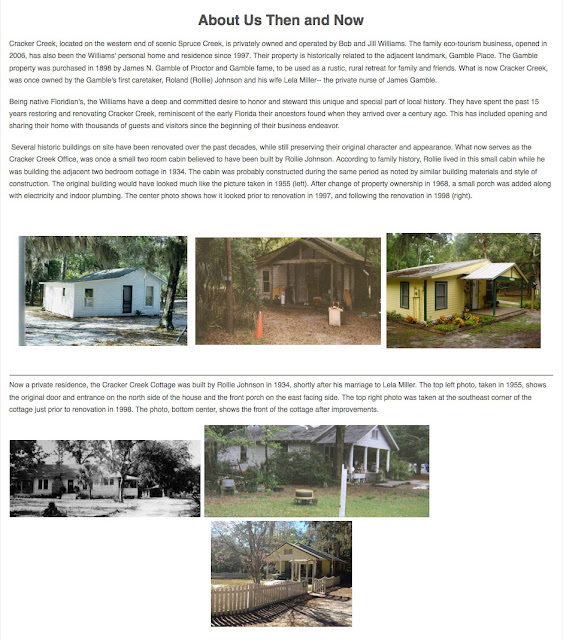Edward and Rose McDonald and their five children came to Florida in 1852 from NC in an crude covered wagon drawn by oxen with no tires on the wheels.
"Until they arrived there were no whites living on the peninsula where they located — about where Daytona now stands, nor were there any settlers on the adjacent mainland."
Edward picked a camp site on North Beach Street about where the Echols Bedding Company's
plant was and some earlier accounts say it was where
J.W. Fulghams Beehive store was located. Fulgham's sold dry goods, notions, Gents and Ladies furnishings, hats and shoes. Fulgham's Dec. 15, 1909 ad in The Daytona Daily News.
Lafayette McDonald said his father (Edward) moved them to a shack about where Fulghams Beehive store was located on North Beach Street in Daytona.
"He also said there were plenty of wild animals in the area.
I remember one day my mother heard the dogs barking and went out to see what was the matter and found a panther in
a cabbage palmetto near the front door. She got a gun and killed it."
a cabbage palmetto near the front door. She got a gun and killed it."
In the booklet “Ashes On the Wind” — The Story of the Lost Plantations, by Alice Strickland. On page 40 she writes. “When John Andrew Bostrom, the first settler of Ormond Beach, was sailing down the Halifax River after the Civil War looking for land to settle, he met a Mr. E. A. McDaniel (McDonald), a former liveroaker, who was living in a cabin on the Dunlawton Plantation site. McDaniel had “a salt works which he had constructed out of six iron sugar vats from the sugar mill, and a framework supporting a trough into which the salt water was bailed by hand with a long-handed dipper.” The water was evaporated by boiling it — leaving the salt, which during the Civil War sold as high as twenty dollars a bushel in Confederate money.
In the book “Tales of Florida Crackers”, by Ann Taylor she talks about the McDonald’s hardships in the early days in a chapter called — The Inn:
“Life was rugged for the McDonald's as they carved out a niche for themselves in a harsh land that hadn’t been occupied since the Seminoles wrought destruction on the plantation owners more that twenty years earlier. They were fortunate to produce some big, strapping sons. As Murray McDonald said, ‘In those days, you relied on your children for help; that’s all you had’.”












































